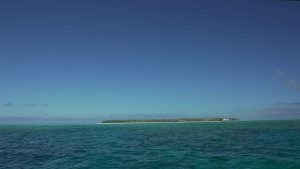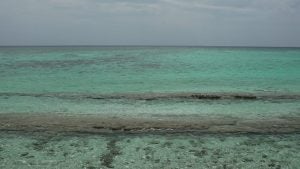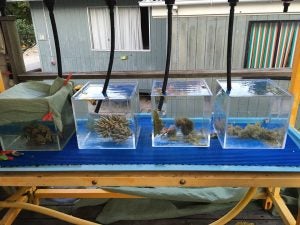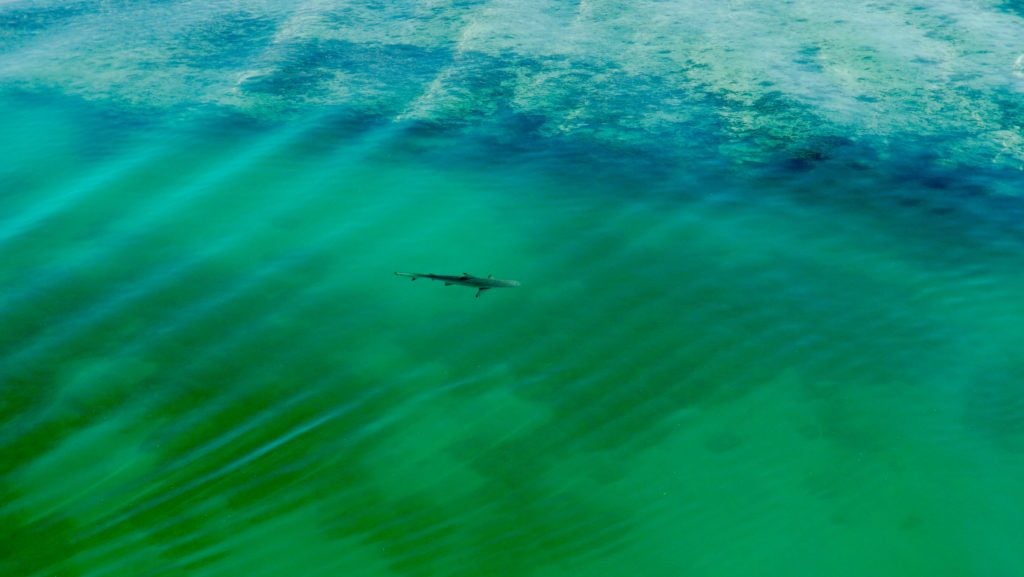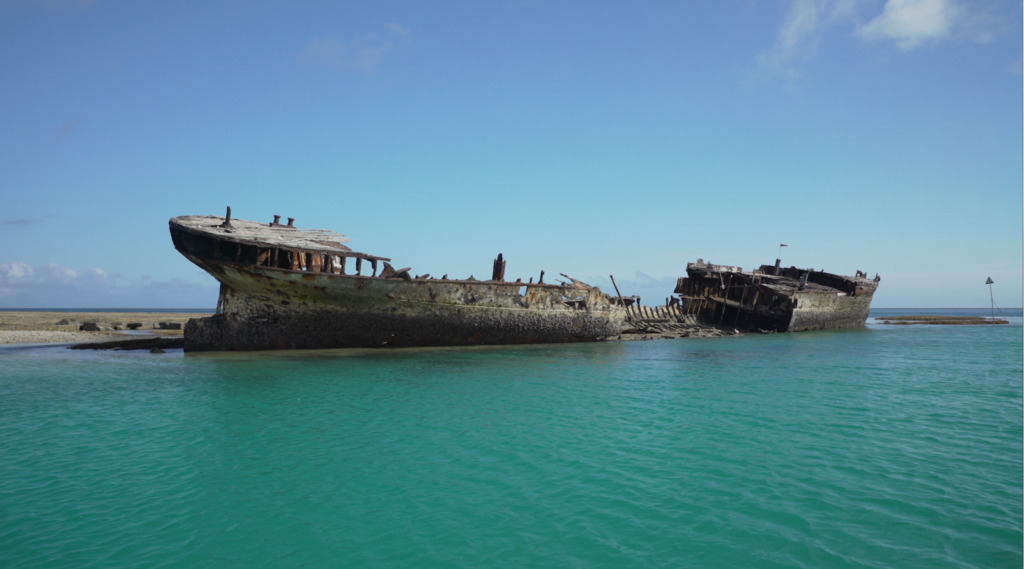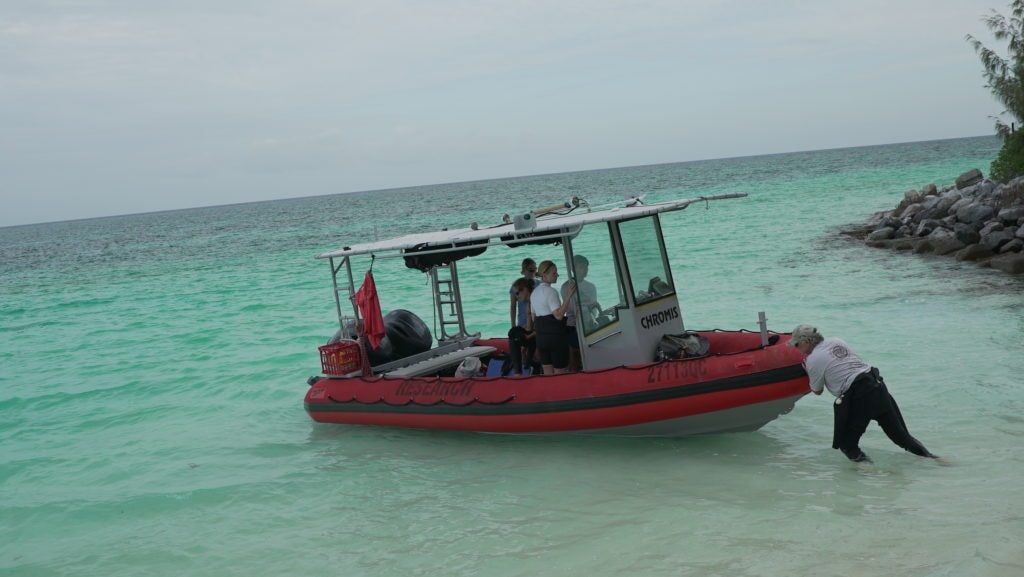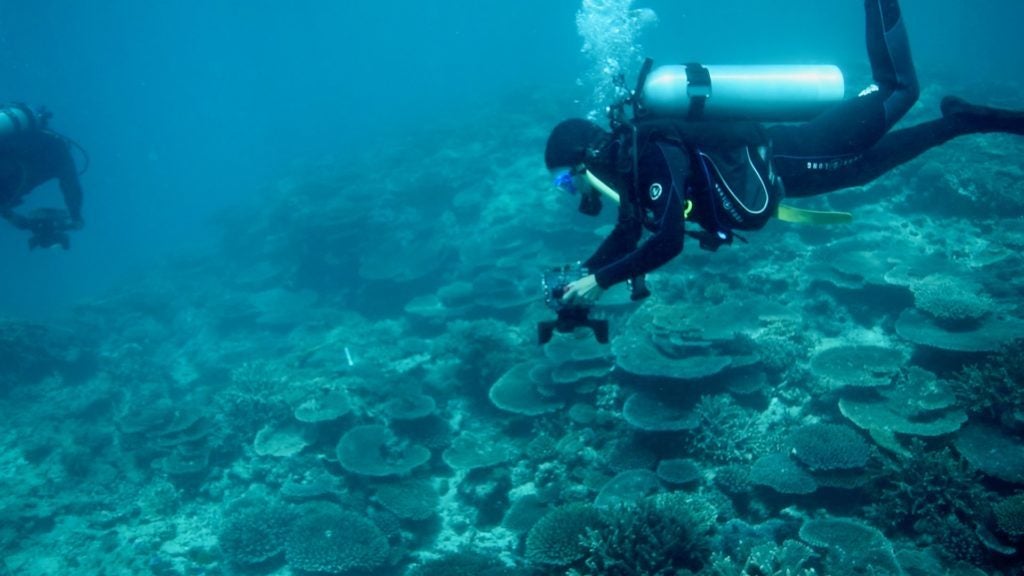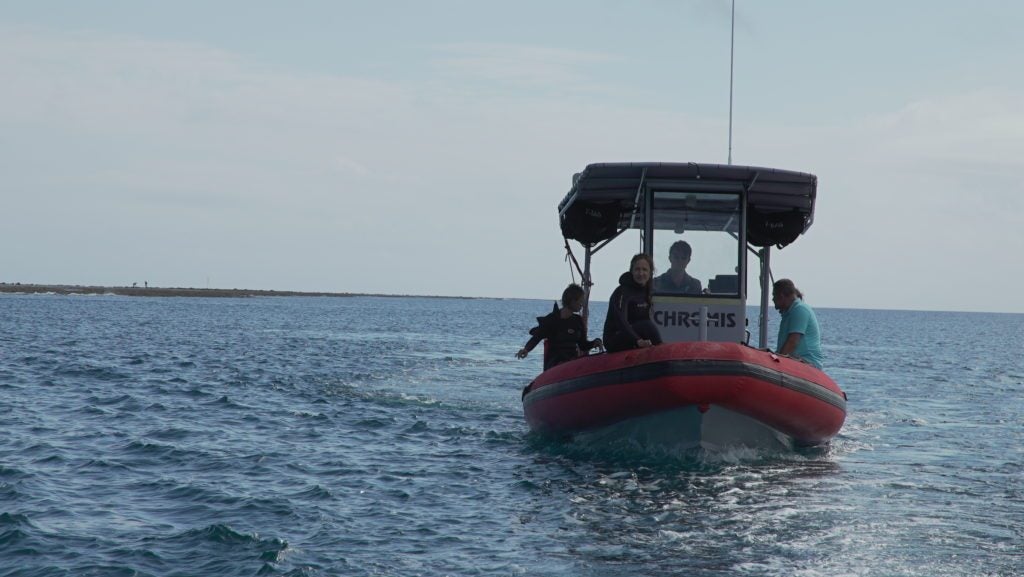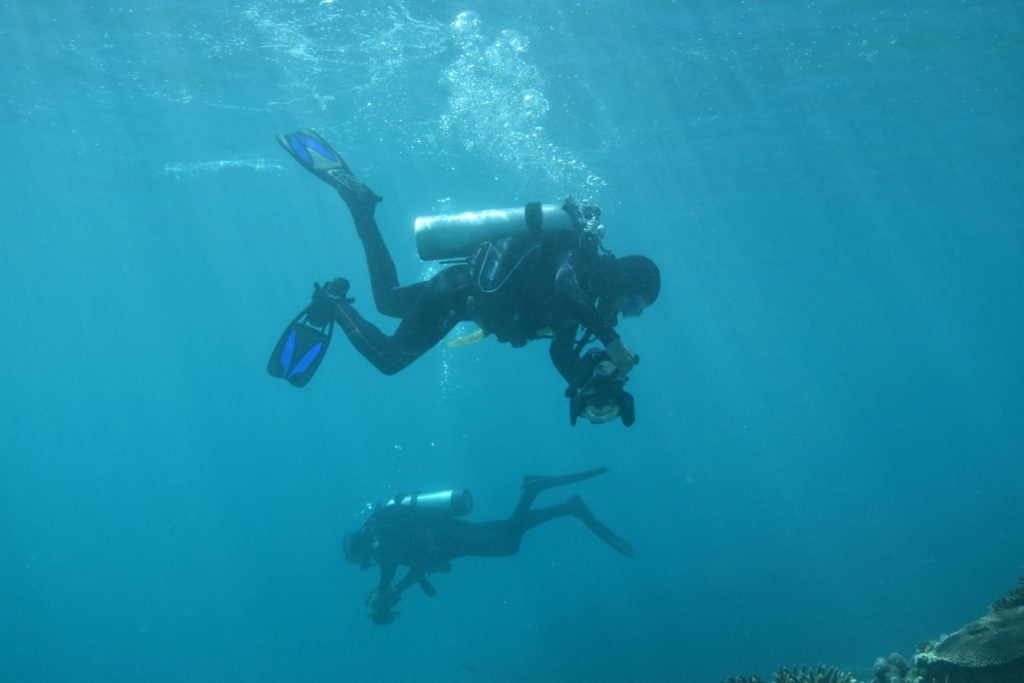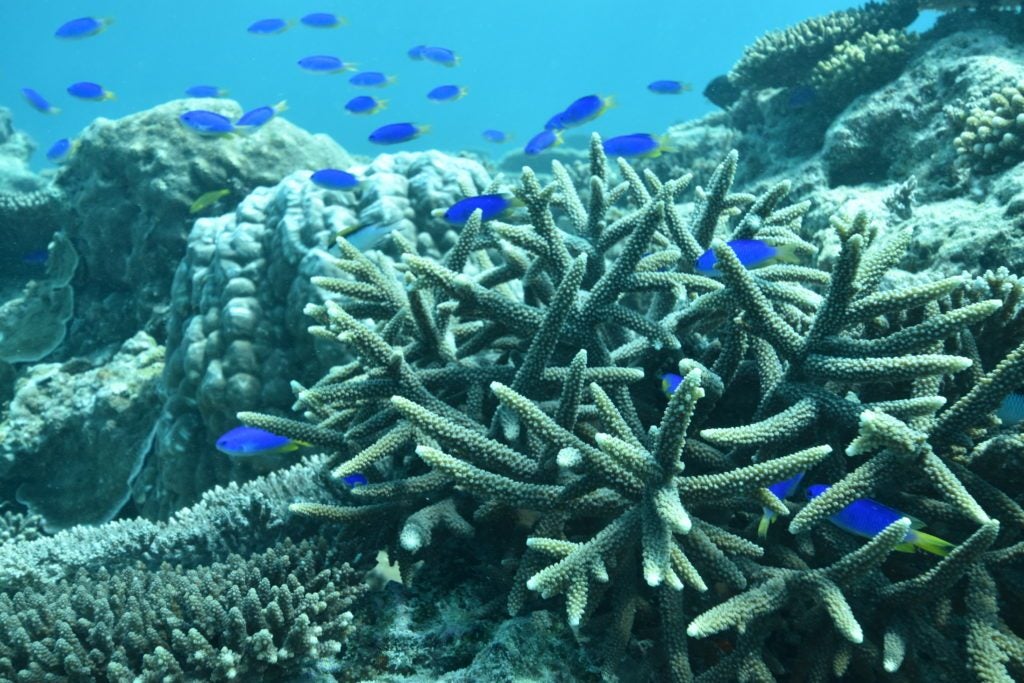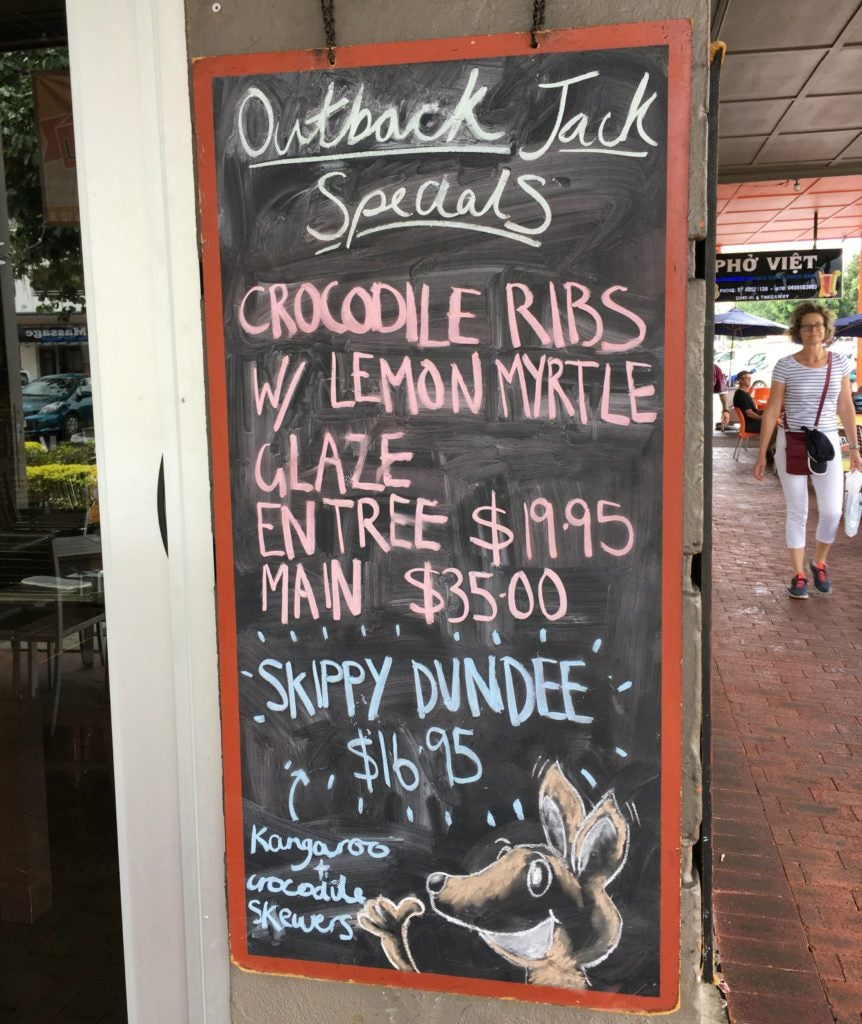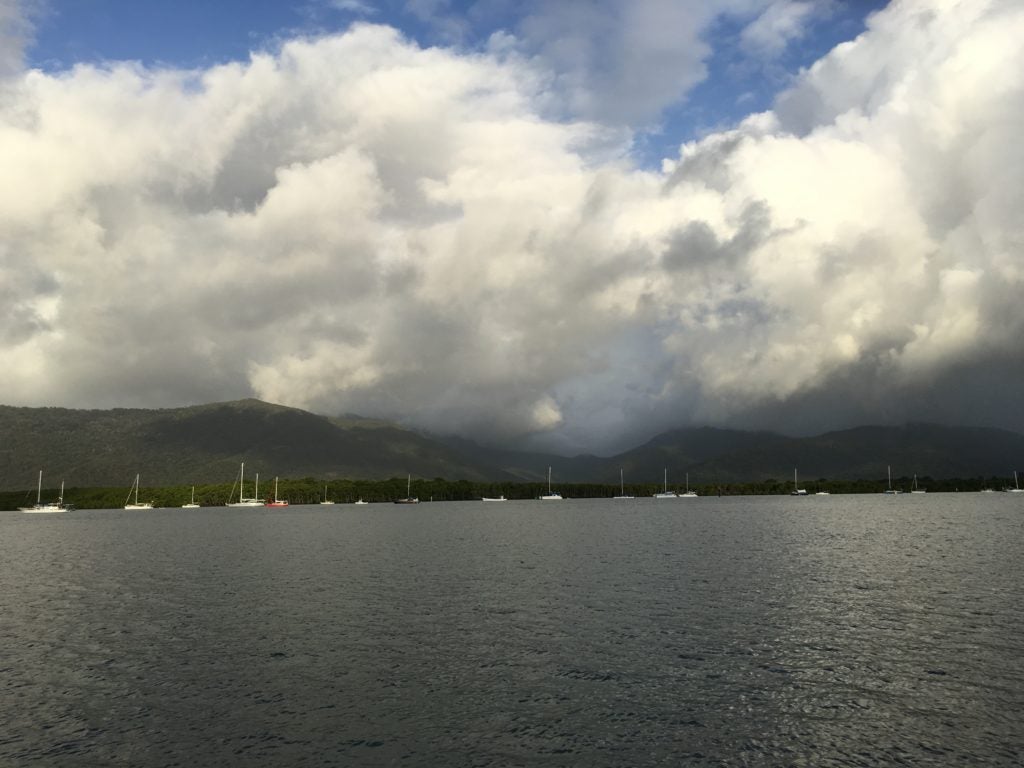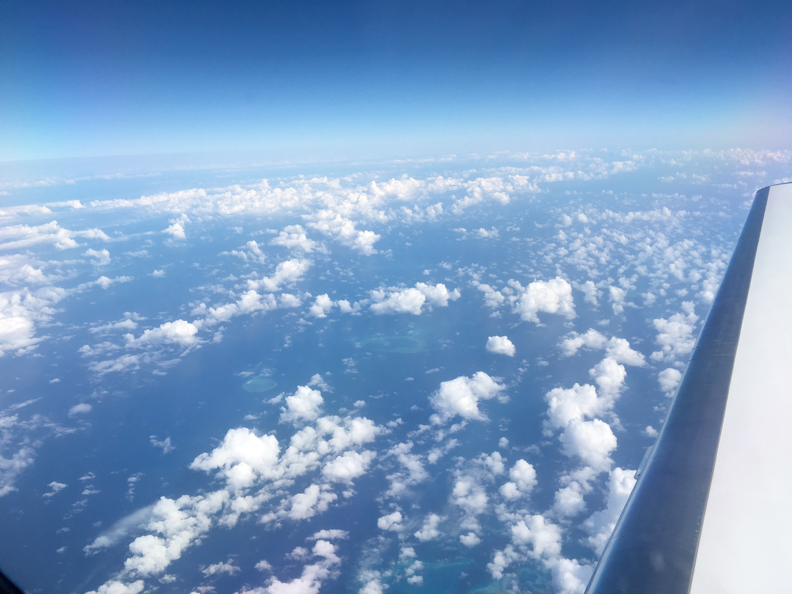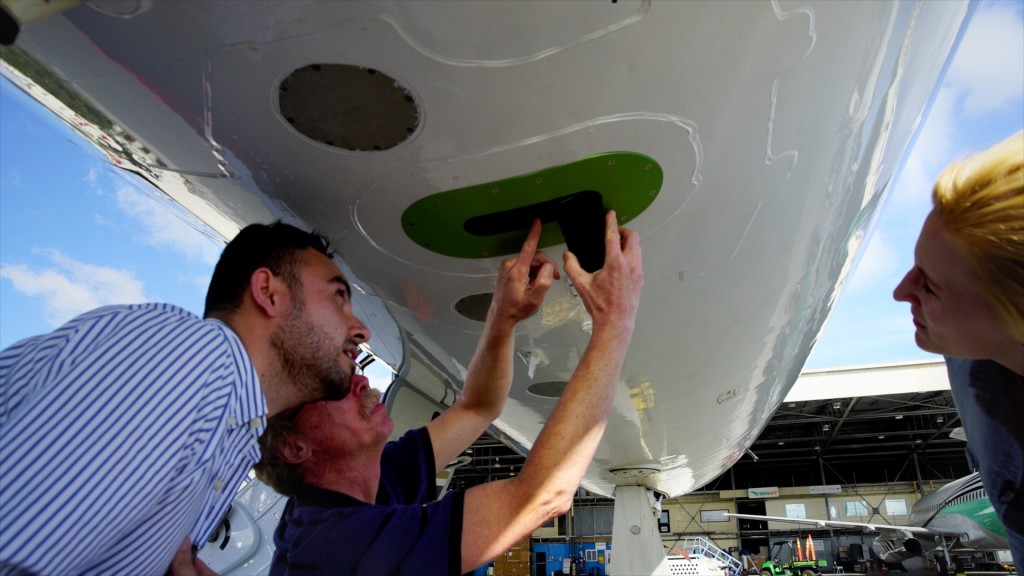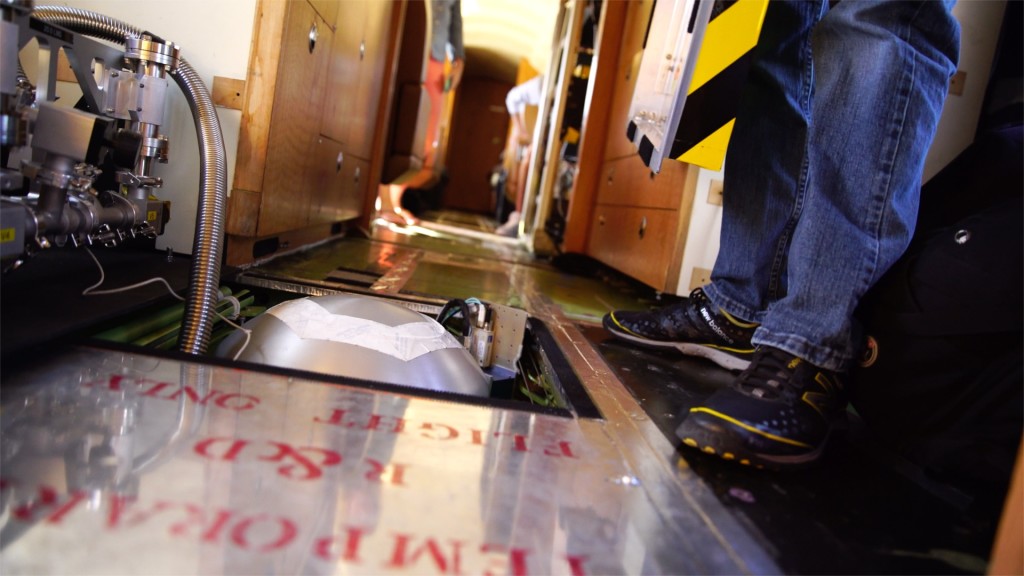NASA Earth Blog #11
The Magic of the Marianas and Micronesia
by Ali Hochberg / WESTERN PACIFIC OCEAN /

Eric Hochberg gives the “OK” sign after completing a set of benthic reflectance measurements in Palau. Credit: Stacy Peltier
Many people are familiar with—or have at least heard of—the Mariana Trench. Located in the western Pacific Ocean, this crescent-shaped feature on Earth’s crust is the deepest part of the world’s ocean, reaching a maximum depth of 10,994 meters (36,070 feet) in an area known as “Challenger Deep.”
Fewer people, however, are familiar with the Mariana Islands—a chain of 15 islands that include ten uninhabited volcanic islands to the north and five limestone islands to the south. The Marianas are divided into two political regions: the Commonwealth of the Northern Mariana Islands (a Commonwealth of the United States comprising Saipan, Tinian, and Rota) and Guam (a US territory). Fringing the coasts of each of these islands are lush coral reefs that support indigenous fishing and a large tourism economy, including many ecotourism opportunities.
For six weeks in April and May, the coral reefs of the Mariana Islands also supported a cadre of scientists deploying instruments and collecting data as part of NASA’s COral Reef Airborne Laboratory (CORAL) mission. Using a state-of-the-art sensor—the Portable Remote Imaging Spectrometer (or PRISM)—housed in a Gulfstream-IV airplane, CORAL will provide a new perspective on the function and future of coral reef ecosystems.
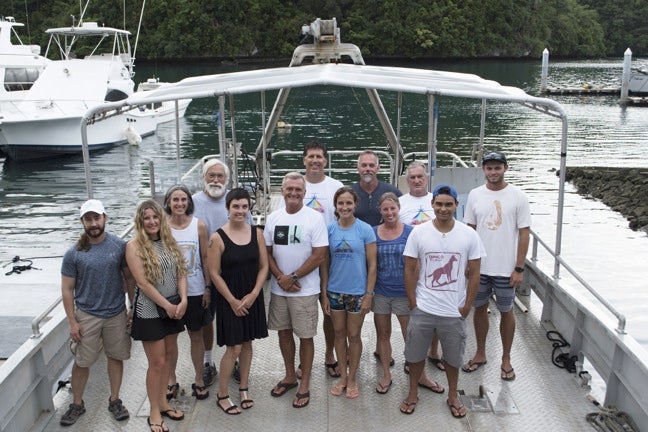
The CORAL team in Palau (from left): Brandon Russell (UConn), Chiara Pisapia (CSUN), Lori Colin (CRRF), Pat Colin (CRRF), Stacy Peltier (BIOS), Bob Carpenter (CSUN), Eric Hochberg (BIOS), Andrea Millan, Alex Hunter (BIOS), Yvonne Sawall (BIOS), Steve Dollar (UH), Rodrigo Garcia (UMass), Sam Ginther (CSUN)
The data collected by PRISM, and validated through extensive in-situ (or in-water) measurements in the field, will form a series of maps that indicate the relative densities of coral, sand, and algae in each study area, as well as rates of primary productivity (the creation of new organic material) and calcification (the process by which reefs produce calcium carbonate, an important determinant of reef health). With these maps, the CORAL team can build models to help scientists, resource managers, and politicians better predict how reefs are impacted by both natural and human processes.
From April 7-18, the CORAL field validation teams surveyed locations in Guam and from May 1-16 they conducted similar validation activities in Palau, an island nation southwest of Guam and the Northern Mariana Islands whose coral reefs have been named one of the “Seven Underwater Wonders of the World” by the Council for Educational Development and Research. (The Great Barrier Reef and the Galapagos Islands are two other famous examples on this list.)
While in Guam, the three in-water validation teams surveyed 65 benthic cover sites (from which high-resolution photo-mosaics will be produced, allowing for detailed analysis of the various types of seafloor, or benthic, habitats), 6 metabolism gradient flux sites (which reveal information about reef productivity), 1 metabolism Lagrangian site (with instruments that measure reef productivity and calcification in a set mass of water, over a specific amount of time, along a set transect across the reef), and 42 water optical property sites (which yield information on how light travels through the water column, from the surface to the seafloor and back).
Having spent a significant amount of time doing underwater surveys in Guam during the mid-2000s, Eric Hochberg, an associate scientist at the Bermuda Institute of Ocean Sciences and the CORAL principal investigator, was pleased to see the reefs looking much the same as they did a decade ago.
“The conditions in Guam were great, with the water ridiculously clear just a few hundred meters offshore,” said Hochberg. “Honestly, the biggest challenge in Guam was the fact that we didn’t have access to a working field lab and had to create a makeshift lab in a conference room at the Hilton!”
Brandon Russell, a postdoctoral fellow at the University of Connecticut and part of the CORAL optics team, echoed Hochberg’s sentiments about the challenges in Guam. “Working in remote locations is incredibly challenging,” Russell said. “It forces you to be flexible in planning and implementation to successfully collect good data but, if you can overcome these challenges, there’s a great opportunity to collect a huge, unique, and varied data set.”
In Palau, the field teams surveyed 74 benthic cover sites, 10 metabolism gradient flux sites, 2 metabolism Lagrangian sites, and 52 water optical property sites. In addition, 23 sites were studied with an underwater spectrometer to collect measurements of benthic reflectance, or the amount of light that is reflected from the seafloor back to the ocean surface. Each benthic community—in this case coral, sand, and algae—has a different spectral “signature” (how much light is reflected as a function of wavelength), which means that measurements of benthic reflectance can be used to identify the composition of the seafloor.

A view of Palau’s stunning and diverse coral reefs, along with some of its local fauna. Credit: Eric Hochberg
The reefs in Palau lived up to their billing, providing a stunning natural backdrop for the CORAL survey work being conducted. Stacy Peltier, a research technician in Hochberg’s lab at BIOS and part of the CORAL benthic team, said the reefs there were a completely new experience for her.
“While in Palau we discovered a gap in our underwater communication,” Peltier said. “We had no way of conveying how awesome something was, so we had to invent a new diver signal: the head explosion. The scenery was so overwhelming you could barely decide what to look at.”
And, unlike in Guam, the CORAL team had access to dedicated facilities and research vessels in Palau courtesy of the Coral Reef Research Foundation and the dynamic husband-and-wife team of Pat and Lori Colin, the foundation’s director and laboratory manager/research biologist, respectively.
“It’s not an exaggeration to say that we wouldn’t have been able to complete this portion of the CORAL mission without the support of Pat and Lori,” Hochberg said. Agreeing, Peltier said, “Pat and Lori were eager to share their knowledge of Palau’s reefs and actively guided us through so many field aspects that could have easily turned into serious problems.”
The airplane carrying the PRISM instrument shuttled between bases of operation on Guam, Yap (part of the Federated States of Micronesia), and Palau, allowing the flight team to take advantage of shifting weather windows in each region. Over the six-week campaign a total of 75 flight lines were collected, representing at least partial coverage of reef areas in Guam, Rota, Tinian, Saipan, Farallon de Medinilla, Anatahan, Guguan, Alamagan, Pagan, Asuncion, Maug, Farallon de Pajaros, and Palau.
With the campaign in the western Pacific complete, and with flight hours remaining, the CORAL investigation ended on a high note by flying PRISM over reef tracts in the Florida Keys. This “bonus reef” is the first CORAL data set from the Atlantic Ocean and will serve as another representative reef area in terms of reef type, physical forcings, human threats, and biodiversity.
“As we ended the campaign with a number of planned flight hours ‘in the bank,’ we were able to quickly formulate a plan to image the coral reefs around Florida,” said William Mateer, CORAL project manager with NASA’s Jet Propulsion Laboratory. “This reef was the initial location for the CORAL operational readiness test. Weather cooperated and we had two days of great collections (22 lines) to add to the data available for science analysis.”
The field and airborne teams have returned to their respective home institutions and the CORAL project is now moving into the data processing and analysis phase, which will extend into 2018. CORAL datasets and data products are publicly available. For more information please visit coral.bios.edu/data or coral.jpl.nasa.gov.
NASA Earth Blog #10
Bob Carpenter surveys the seafloor surrounding the research vessel Anthias as it glides over Blue Lagoon, the largest part of the reef that envelops Heron Island. He and his team, which is conducting the in-water validation of reef metabolism for NASA’s Coral Reef Airborne Laboratory (CORAL) mission, are searching for a good spot among the numerous small patch reefs in the lagoon to erect what he calls an “underwater construction project.”
The boat stops to look at an area more closely.“It’s looking pretty algalicious here,” says Carpenter with a laugh, knowing he just made up a word. He asks skipper Sam Ginther, a research technician at California State University, Northridge, where Carpenter is a professor of biology, to continue to another location.
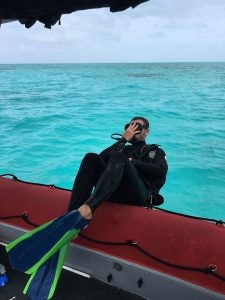
Sam Ginther, California State University, Northridge, goes into the water Credit: NASA-JPL/Alan Buis
Carpenter has brought his three-person team to the Great Barrier Reef to make in-water measurements of the productivity and calcification of the community of living organisms found on the seafloor here at Heron Island and also at Lizard Island, on the northern Great Barrier Reef. Their data will help the CORAL team validate CORAL’s advanced Level 4 science products.
It’s mid-September and day two out in the field for the team at Heron. They’ll be here for another week, installing instruments at up to 10 sites around Heron Reef. Yesterday they deployed a float called a drogue to track the paths of currents below the water surface to help guide their placement of instruments. On today’s trip they’ll be deploying two types of instruments: samplers that collect water for later analysis in the lab, and gradient flux instruments that measure oxygen and water flow.
At this location they are deploying the “gradient flux” instruments. The instruments will measure two of the three key aspects of reef metabolism his team is studying: primary productivity and respiration (the third is calcification). Metabolism refers to the processes by which reef communities acquire energy for growth and build their limestone skeletons.
The team must work quickly, because the high and low tides here at this time of the month are extreme.
“I think the difference at this time of day is 7.2 feet, so we need to get out to the lagoon when it’s high tide so we’ll have deep enough water to navigate in when we’re entering the lagoon and going over the reef crest,” says Chiara Pisapia, a postdoctoral researcher from Italy who came to Australia six years ago and recently completed her postdoc at James Cook University. She’s now joining Bob’s group at CSUN.
“If we’re still in the lagoon when the tide goes down, we’ll be stuck here until the next high tide.” The team will have a little more than two hours in the lagoon, which averages about 11 feet in depth, to accomplish today’s tasks. The instruments have to be placed where they won’t go dry when the tide goes out.
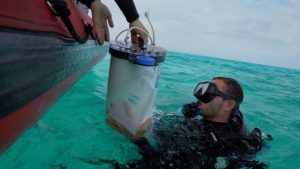
Sam Ginther, California State University, Northridge, takes a gradient flux instrument from Chiara Pisapia, James Cook University. Credit: NASA-JPL/Jim Round
The gradient flux system—oxygen sensors and acoustic Doppler velocimeters—will be mounted at two heights above the seafloor. The bottom instruments are placed 4 inches above the flora and fauna on the seafloor, with the top instruments placed 43 inches above the seafloor. The method they’re using relies on the flow of water to carry water and oxygen (either produced by photosynthesis or taken up by respiration) past the instruments.
“The water here doesn’t always flow in the same direction, so we’re looking for a coral patch that’s fairly uniform where the water will carry data signals on the surrounding habitat past these sensors,” Carpenter says. “We’ll then place the sensors right in the center of that patch so they will integrate the metabolism from that point to a larger scale: anywhere from 108 square feet to perhaps 538 square feet, depending on the speed of the water flow. Since the pixel size for PRISM’s spectrometer on the Gulfstream IV aircraft is 86 square feet, we’re able to match its scale really well.”
The team locates a suitable spot in the lagoon and gets to work, donning scuba gear and taking the equipment they will need down to the seafloor below. The equipment includes a tall cylindrical stand with adjustable brackets and clamps that hold the four gradient flux instruments in place at fixed heights to eliminate any bias in the measurements.
The sensors will continuously measure oxygen and water flow across the layer of water directly above the organism-covered seafloor, providing measurements of the area’s net productivity during the day and its respiration at night. Upon completing the installation, the divers release a special yellowish-green, reef-safe dye, which allows them to verify that water is flowing across the instruments. A member of the team notes the location of the installation using a portable GPS receiver. The team will repeat the process tomorrow, moving the instruments to a new location on the reef every 24 hours.
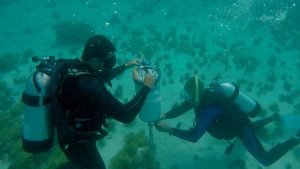
Bob Carpenter and Sam Ginther, both of California State University, Northridge, set up gradient flux instruments. Credit: Chiara Pisapia.
Earlier in the day, the team used GPS coordinates to locate instruments they installed in the lagoon yesterday that are used to measure reef metabolism, and placed two CSUN-built integrated water samplers at the same locations. The water samplers were placed about 1,312 feet apart, one downstream from the other, moored to the seafloor. They remain in place for five consecutive days.
The team swaps the sample bags out and takes them back to the lab to analyze for total alkalinity. Changes in total alkalinity can be used to estimate reef calcification, a key element of reef metabolism.
Calcification is the secretion of calcium carbonate—what we think of as limestone. Coral skeletons and other calcifying organisms such as calcified algae build the reef framework, allowing reef systems to grow vertically over time to create the largest biogenic structures on Earth. The process of calcification is fundamental to the growth of corals and reefs in general. As climate changes and sea surface temperature and ocean acidification increase, calcification is predicted to decrease. In fact, experiments are showing that calcification decreases with simulated increases in ocean acidification and temperature.
Carpenter says the team wants to sample as many different habitats as they can so that CORAL’s benthic cover in-water validation team will know exactly what the metabolism is for these different habitat patches. “We install the instruments in a location, leave them for about 24 hours, and mark them with a float,” he says. “Then the benthic cover team comes the next day and creates their photo mosaic of the area. So we end up knowing exactly what’s there and exactly what the rates of metabolism were in those same patches. We can then match those different habitats with PRISM data to hopefully extrapolate what the reef is doing on a larger scale.”
Their work for the day complete, Pisapia takes the helm and carefully navigates the boat through the shallow corals out of the lagoon and back to the harbor. Tomorrow they’ll go out again and move another set of instruments. Their work here on Heron Island will be followed by several months of data processing and analysis.
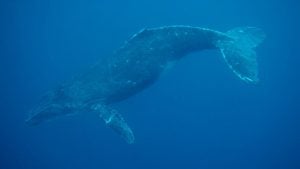
A young humpback whale swims in the waters off Heron Island. Credit: Bermuda Institute of Ocean Sciences/Stacy Peltier
As they head for shore, a large humpback whale and her calf breach out of the water a short distance away. They stop for a minute to watch in awe. Life is good.
by Alan Buis / OFF HERON ISLAND, QUEENSLAND, AUSTRALIA /
NASA Earth Blog #9
Heron Island: Like Nowhere Else on Earth
Heron Island is a 42-acre coral cay located within the World Heritage-listed Great Barrier Reef Marine Park, 45 miles (72 kilometers) off the coast of Queensland, Australia. It is surrounded by a 5-mile-long (8-kilometer-long) platform reef that drains at low tide to form a large lagoon around the island.
First discovered in 1843, Heron Island housed a turtle canning factory in the 1920s, but today it is best known as a popular destination for tourists and researchers alike. It was declared a national park in 1943. The island includes a resort and the Heron Island Research Station, Australia’s largest university marine research facility, which is operated by the University of Queensland. The station is involved in research and education on marine sciences and the marine environment.
Heron Island and its surrounding reef teem with life, including sea turtles, whales, sharks, rays, sea cucumbers, sea stars, Christmas tree worms, sea hares, algae, many other varieties of fish, crabs, shrimp, and of course many different species of coral. Named after the reef herons seen feeding on the reef flats, the island is a bird haven: In the summer its bird population is estimated at around 200,000. Flora include grasses, herbs and trees.
by Alan Buis / OFF HERON ISLAND, QUEENSLAND, AUSTRALIA /
NASA Earth Blog #8
It’s a warm and sunny morning in mid-September as Stacy Peltier and her colleagues on NASA’s Coral Reef Airborne Laboratory (CORAL) mission survey team prepare for their first day in the water at Heron Island, a 42-acre coral cay about 45 miles off the coast of Queensland, Australia. As she places a Nikon D5500 camera into an underwater housing, several sharks swim nearby in the aquamarine waters of the island’s small harbor dredged out of the reef.
“I’ve never jumped in the water with tons of sharks before,” she quips with nervous laughter. Fortunately for her and her team, the sharks found around Heron Island aren’t particularly dangerous to humans.
The research technician from the Bermuda Institute of Ocean Sciences (BIOS) and her three teammates have come to Heron Island as one of three independent, but coordinated, in-water validation teams that are collecting data on reef condition at Australia’s Heron and Lizard Islands during CORAL’s two-month Great Barrier Reef study. This “ground truth” data will be compared with data collected from the air by NASA’s Portable Remote Imaging Spectrometer (PRISM) instrument to validate the accuracy of the PRISM data and map products. Three fundamental types of data are being gathered: water optics, reef benthic cover and reef metabolism.
Reef benthic communities typically consist of a combination of coral, algae and sand. Over the next week, the benthic cover team is collecting a series of high-resolution photomosaics that will depict the composition of the various seafloor communities at multiple spots around the Heron Island reef.
Surveys of reef benthic cover are needed to validate some of CORAL’s more advanced data products. The CORAL mission is collecting benthic cover data for 160 to 250 separate sites across each reef validation location in the global mission. The team will analyze the mosaics to make a highly accurate determination of the percentages of various types of benthic cover in each photo.
By 9 a.m., the boat is loaded with the team’s research equipment and scuba gear. Peltier, co-skipper on today’s trip, slowly guides the Heron Island Research Station research vessel Chromis out of the harbor. As they head out, the ghostly, rusted wreck of the HMCS, Australia’s first official naval vessel, sits on its side on the reef crest at the entrance to the harbor.
On board with Peltier are teammates Yvonne Sawall, a postdoctoral scientist at BIOS; research technician Andrea Millan and team leader Steven Dollar, both of the University of Hawaii; and NASA CORAL project scientist Michelle Gierach, who’s come along to observe and assist from the boat.
Peltier radios the research station to report that there are seven passengers on board and that we are expected back to harbor at 4 p.m.
“Research, Research, Research, this is Chromis,” she says.
The station confirms, and informs us that the Gulfstream IV aircraft carrying NASA’s PRISM instrument is on its way to fly over the Heron Island region and is expected soon.
Our first dive point is an area called Blue Pools. The team attaches the boat to a mooring buoy. The water depth is about 20 feet.
The team quickly gets to work, donning scuba gear and plopping backward into the 72-degree Fahrenheit water. The skipper does not get in the water; she must remain with the boat at all times for safety purposes. The divers are handed one of the three cameras on board and they submerge.
It’s painstaking work. One team member first lays 1.6-foot-long poles across the seafloor to delineate 33-by-33 foot square plots, a size that correlates to the spatial resolution of CORAL’s PRISM instrument from 28,000 feet above sea level.
The other team members use their cameras to photograph the entire plot, with one diver scanning east to west and the other scanning north to south, swimming about 6 feet above the seafloor. A snorkeler at the water’s surface carries a handheld GPS unit to precisely mark the location of the plots to correlate with the plane data.
The team takes up to 1,000 pictures per plot, a process that takes 15-20 minutes. On a typical day the team will do two to three locations, collecting measurements from three to four sites at each location. They start in the deepest water, then move up the slope of the reef toward shore. If the water becomes too shallow they snorkel instead of scuba.
Later, back on land, a special software tool called Agisoft PhotoScan will stitch all the photographs together into a mosaic, which scientists can then use to characterize what the community structure of the coral reef is at the given spot.
“This is a new way of assessing reef structure and function using this mosaic, and we’ll follow it with analysis of these pictures to be able to see things you can’t see any other way but by jumping in the water and putting your eyes on it,” says Dollar, a coral reef biologist and environmental consultant.
“This is the equivalent of going from a Model T to a Tesla compared to the way previous reef studies have been done. And the biggest thing that allowed this to happen is digital photography. Here, each time we come out of the water, we’ve taken up to a thousand pictures. This was not possible before the advent of digital photography.”
“We want to get as many different benthic community types as possible, and then match up the mosaics with the pictures we get from the airplane,” says Sawall, a postdoc with CORAL Principal Investigator Eric Hochberg at BIOS, where she specializes in coral metabolism.
A native of the south of Germany, Sawall was first inspired to study coral reefs when she dived the Great Barrier Reef at age 19. “It was my first experience in the ocean; I loved it so much,” she says. “The interplay between the organisms fascinated me. Yet at the same time I could see the impacts that humans were having on reefs, and that drove me to want to protect them.” Sawall views the team’s work as a vital stepping-stone in our understanding of the health and status of coral reef ecosystems worldwide.
“What we are doing here is a little puzzle piece toward achieving that goal,” she says.
The team finishes its work at the first dive location, which is primarily rubble (rocks, sand and dead coral), then they move closer to the reef, which consists of a variety of living corals occurring in a multitude of growth forms. The highest coral cover is typically found on the outside and slope of a reef, while inside the reef lagoon, algae and sand dominate the bottom.
Their first dive location completed, the team stops briefly to munch on some Tim Tams, Australian chocolate-covered biscuits; these have a distinct coconut taste. As they break, schools of little black fish swim next to and below the boat, attracted by our presence. One of the team spots a green sea turtle swimming nearby. The seas are calm.
I ask Peltier to describe what she’s seeing below the surface.
“The reefs at Heron Island are beautiful,” she says. “We were recently at Lizard Island on the northern Great Barrier Reef and you could see a lot of damage from both cyclones and the big bleaching event that happened this summer. But Heron Island farther south has been relatively untouched. We visited a few rubble sites, which are natural. The parts that were covered in coral were just incredible — we saw corals growing on top of corals, which I haven’t seen before. This is my first time diving in an area that has gigantic plate corals.”
Next it’s off to our second survey location, a place called Tenements 2. The team repeats the process of photographing plots of seafloor. As they work, the tide continues to go out, exposing coral heads, which rise like a modern-day Atlantis from the seafloor. Waves begin cresting as they hit the top of the reef. Flocks of birds circle above, looking for lunch.
Their second site completed, the team is ready for lunch themselves. I ask Millan, a native of Troy, Michigan, with the University of Hawaii about her impressions of the second dive site.
“I was surprised by the large diversity of coral, including fire coral,” she says. “There was a big school of unicorn fish. I wanted to go take a look at some things, but I had to keep telling myself, ‘Just keep swimming, stay on the square,’” she says with a laugh.
After lunch, it’s off to the final site: Libby’s Lair. Millan first does a quick snorkel trip to survey the location. It looks suitable, so the team suits up and goes back in the water. They report lots of varieties of coral and big fish.
As the day wraps up, the team is joined by another boat carrying two CORAL Australian collaborators from the University of Queensland: Stuart Phinn and Chris Roelfsema. They are doing separate in-water validation work in conjunction with the other CORAL validation teams. Chris joins us in the water, taking photos and video.
It’s now a little after 3 p.m., and our team has completed its surveys for the day. It’s time to head back to the harbor, unload the boat and clean the equipment.
Today the team photographed seven sites, while PRISM aboard the Gulfstream IV collected 17 lines of data on a nearly 6-hour flight. Today’s activities, combined with the CORAL team’s previous flights up and down the Great Barrier Reef and in-water validation activities at Lizard Island, mean that CORAL is well on its way to achieving its Level 1 science objectives in Australia. All in all, a good day by air and sea.
NASA Earth Blog #7
G’day from Australia!
With the successful June campaign readiness tests in Hawaii behind them, NASA’s Coral Reef Airborne Laboratory (CORAL) team has rolled up their sleeves and are now hard at work shedding new light on our understanding of Earth’s coral reef ecosystems. The team’s first stop: Australia’s majestic Great Barrier Reef, the world’s largest reef ecosystem.
For this NASA Earth Expeditions reporter, the first thing I learned is that getting to Oz isn’t as easy as clicking your heels. I quickly grasped a new appreciation for just how vast the Pacific Ocean is: a 15-hour flight from LA, literally heading into the future, 17 hours ahead of when I left. After arriving in Sydney, it was another almost three-hour flight up the coast of Queensland to Cairns (pronounced “Cans”).
Yet as long as my travel odyssey was, it was even longer for some others on the CORAL team. For example, the crew of the Tempus Applied Solutions Gulfstream IV plane carrying CORAL’s NASA Jet Propulsion Laboratory-built Portable Remote Imaging Spectrometer (PRISM) instrument began its journey in Maine; CORAL Principal Investigator Eric Hochberg and his wife traveled from the Bermuda Institute of Ocean Sciences.
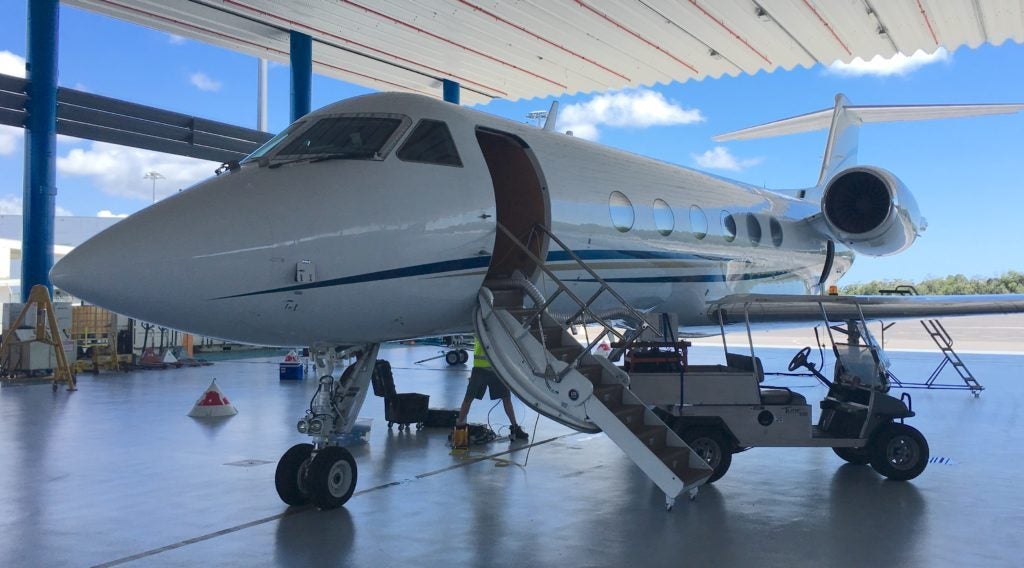
The Gulfstream IV plane carrying the Coral Reef Airborne Laboratory’s (CORAL) Portable Remote Imaging Spectrometer (PRISM) instrument sits in Hawker Pacific’s hangar at Cairns Airport. Credit: NASA/Alan Buis
Cairns is a city of 160,000, located in tropical North Queensland. It is popularly known as the Gateway to the Great Barrier Reef. Overlooking a bay and surrounded by green hills with exotic flora and fauna, Cairns is a major tourist destination, filled with hotels, restaurants and attractions. To my disappointment, I’ve yet to encounter a single kangaroo, wallaby, emu or koala, but I have met a lot of friendly people. The bay does contain crocodiles; the boardwalk on the esplanade has signs warning people not to swim there.
Through October, the Gulfstream IV plane and its support team will be based here, closely monitoring the weather daily in search of the optimal clear sky and light wind conditions required for CORAL to collect its data. The team will survey six discrete sections across the length of the Great Barrier Reef.
The in-water science team calibrating and validating the airborne measurements from PRISM from two locations on the reef arrived in Cairns Sept. 1 and transited to Lizard Island, its first location, on Sept. 3. The team successfully conducted its in-water science validation operations there from Sept. 4. to Sept. 12. Over the next few days, most of the science team will depart for Heron Island, the other calibration/validation location.
The plane and its team arrived in Cairns Sept. 2 and set up residence at the Hawker Pacific Fixed Base Operations facility at Cairns Airport. Following a hard down day (day off) on Sept. 3 for the plane and crew, the team unloaded the aircraft and ran through all the procedures required for flight, including loading all 121 flight data lines PRISM will acquire over the reef into the pilot’s flight planning system. The aircraft’s systems were checked and the PRISM instrument was powered on and thermally stabilized.
And then the flight team waited for the weather to cooperate.
And waited. And waited.
Following several days of weather scrubs, on Sept. 9 weather conditions were favorable over Lizard Island, and the team was given the go to fly. In their four-hour flight, the first operational flight of the CORAL mission, the team collected 14 lines of data, which were subsequently removed from the plane and downloaded and processed on the field server. On Saturday, Sept. 10, flush with the success of the previous day’s flight and with a somewhat favorable weather forecast in one of the data collection areas, the team prepared to fly again. They took off, bound for the Townsville coast area, but cloudiness forced them to return to base. Since then, weather has continued to not cooperate and no more flights have been conducted.
Today at Cairns Airport, the CORAL team will hold an event for Australian media and dignitaries from a number of Australian science organizations, where they will discuss the CORAL Great Barrier Reef campaign and reveal some of their initial data from the successful flight on Sept. 9.
by Alan Buis / CAIRNS, NORTH QUEENSLAND, AUSTRALIA /
NASA Earth Blog #6
CORAL Completes First Airborne Look at Coral Reefs
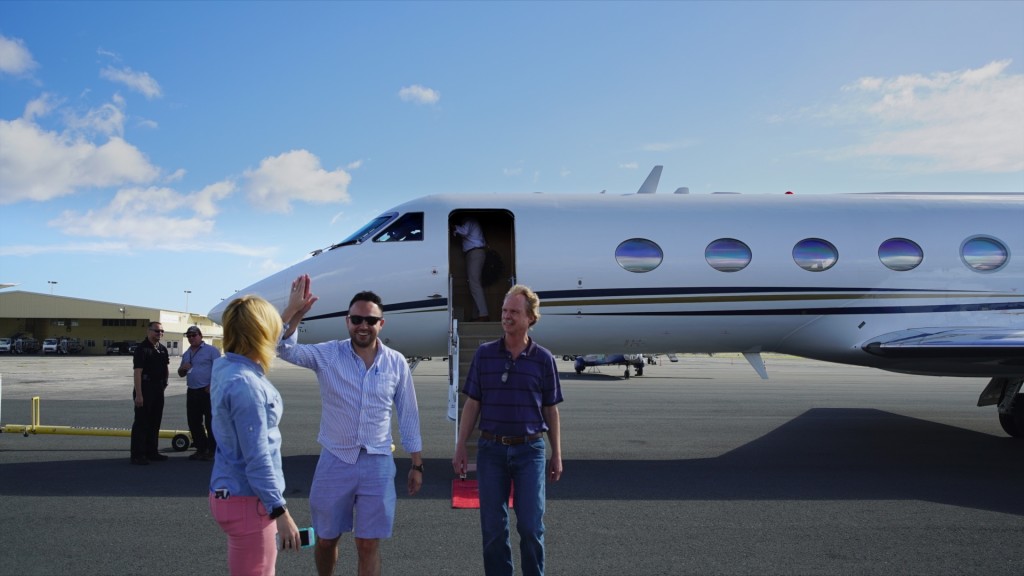
A high five for a successful science flight. Michelle Gierach (left) greets Coral Reef Airborne Laboratory (CORAL) Project System Engineer Ernesto Diaz and Portable Remote Imaging Spectrometer (PRISM) Lead Technician Scott Nolte, all of NASA’s Jet Propulsion Laboratory, after its arrival June 19 at Honolulu International Airport.
by Carol Rasmussen / OAHU, HAWAII /
The Coral Reef Airborne Laboratory’s research aircraft collected its first coral reef data on Sunday, June 19. As the Gulfstream-IV aircraft approached Oahu from Southern California, it took a sharp right turn off the normal approach route. The plane flew a long, straight line above the island’s windward coast, then turned around and flew a second line right next to the first one, like lawnmower tracks. As it flew, NASA’s Portable Remote Imaging SpectroMeter (PRISM) collected spectral measurements, light reflected from the Oahu coastal waters below the aircraft.
As CORAL project scientist Michelle Gierach waited for the plane in Honolulu, she watched the flight lines on her computer, using flight-tracker software. “We’ve been on location waiting for this exact moment,” she said. “Everything has come together — the weather, the plane, and the in-water team. Right now we’re having optimal weather conditions. The field team is in the water as the plane is flying over. You can see [the plane] is aligned perfectly over Kaneohe Bay.”
The group is planning one or more additional science flights, but Gierach is already happy with what CORAL has accomplished. “This has been a long day coming,” she said. “I can’t believe everything has aligned perfectly. It’s been a super-successful operational readiness test.”
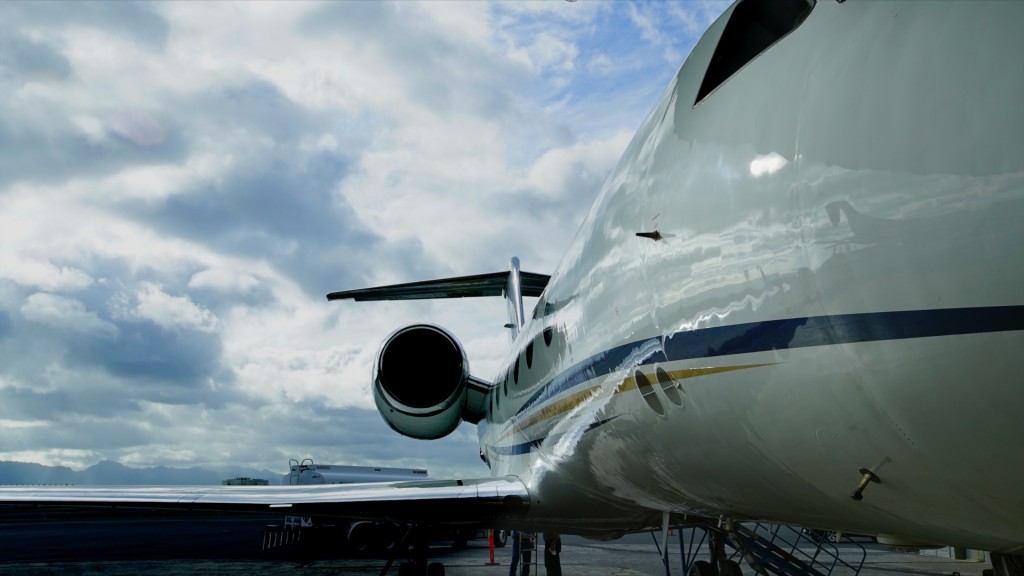
PRISM flies on a Gulfstream-IV from Tempus Applied Solutions. The plane’s Hawaii base for the CORAL flights is Air Service Hawaii at Honolulu International Airport.
NASA Earth Blog #5
The Puzzling Case of Kaneohe Bay
Kaneohe Bay, with Moku O Loe island at right center. Dredge and fill operations in the bay expanded the island from 12 acres to 28 acres. Credit: NASA/James Round
by Carol Rasmussen / OAHU, HAWAII /
The Coral Reef Airborne Laboratory (CORAL) will be the first campaign to study coral reefs at an ecosystem scale. During its operational readiness test in Hawaii last week, we had a chance to talk with two people who have made a lifelong study of their own coral reef in Kaneohe Bay, Oahu, where the CORAL test is taking place. There’s a striking similarity between their observations and those of the CORAL scientists.
“Did you know this used to be called Coral Gardens?” said Leialoha (Rocky) Kaluhiwa, gesturing at Kaneohe Bay. At low tide the bay still looks like a garden, with varied shades of green and patches of coral like ornamental shrubs. In Kaluhiwa’s long lifetime, Kaneohe Bay has undergone a litany of impacts, from dredge-and-fill operations to a level of ocean acidification that some scientists predicted would kill all of the reefs. Yet the bay’s coral reefs appear to be surviving these insults, perhaps even growing in extent.
If one spot on Earth could prove that scientists need a better understanding of reef ecosystems, Kaneohe Bay is it. Humans started changing the bay about 700 years ago by fishing and other interactions, but in the last century, the rate of change has exploded. After World War II, Hawaii’s fast-growing population brought urbanization, pollution and silt runoff. The bay was dredged to create a ship channel and seaplane runways and filled to build out Moku O Loe island, then privately owned but now the location of the Hawaii Institute of Marine Biology. Invasive algae spread so thickly in the 1970s and 1980s that two barge vacuum cleaners called Super Suckers are still used to remove them.
Native Hawaiians Rocky Kaluhiwa and her husband Jerry have watched these changes firsthand. “My grandparents taught me about the ocean,” Jerry said. “They taught me what kind of crustaceans we have here, how to catch them and how to prepare them. I’ve passed that knowledge over to my kids.” When Rocky was a child, the bay water was so clean it was thought to have healing properties. “If you had a big sore, they would tell you to go to a certain place in the bay and wash it out,” she said. “Today if you go to that place with that sore, it’ll get infected, because [the water is] totally polluted.” Despite that and other impacts, Jerry said, “We have more coral now [than in the past], and some new corals have come into the bay.”
“Reefs that are doing well can recover from stress or disturbance by increasing the amount of coral,” said CORAL principal investigator Eric Hochberg. He has seen this pattern not only in Kaneohe Bay but in other reefs around the world. It’s only one of many puzzles of how reef ecosystems interact with their changing environment.
In planning the CORAL campaign, Hochberg correlated data on 10 widely recognized threats to coral reefs, natural and human-made, with data on the condition of reefs worldwide. The results were surprising: There were no clear patterns. In some cases, threatened reefs even appeared to be doing better than unthreatened ones. “The question is, are reef scientists incorrect, or are we missing something in our data?” Hochberg asked. “I don’t think we’re incorrect; it makes complete sense that pollution would be bad for an ecosystem, for example. I think the problem is largely the data. That’s the impetus for CORAL.”
Daniel Schar, Hawaii Institute of Marine Biology, and Eric Hochberg, Bermuda Institute of Ocean Sciences, collecting corals in Kaneohe Bay to study their spectra. Credit: NASA/James Round
Like Hochberg, the Kaluhiwas are more concerned about the reef ecosystem than about any single species. “Coral is not only the coral alone,” Jerry said. “If you lift the coral up and look underneath, you can see oyster shells, clams, octopus, all the small fish, hiding between the branches.” The Kaluhiwas know the value of a thriving ecosystem in producing food and revenue and even have some experience with medical use of reefs, a hot area of biotechnology research today. Rocky remembers her great-aunt using powdered coral in compounding traditional medicines, but those recipes are now lost.
Rocky and Jerry have worked for decades to protect the reefs from coral harvesting and other threats, but the resilience of Kaneohe Bay has also taught them that not every impact is a disaster. That came out clearly when they talked about coral bleaching, which has featured largely in Hawaii news media this year. “You’re going to find it here and there [in the bay],” Jerry said. “That doesn’t mean that type of coral is going to die. It’s not. You watch very closely, and you can see green coming up from under the white. Those guys are growing again.”
“Absolutely we should be worried about threats to reefs, but it’s not as simple as some people think it is,” Hochberg said. “We don’t know the answers yet.” The reef areas that CORAL will survey this year encompass every reef type plus a range of environmental conditions that scientists have identified as influencing reefs. With those data in hand, scientists may finally be able to say more about the relationship between reefs and threats that is so puzzling in this beautiful corner of Oahu.
NASA Earth Blog #4
By Carol Rasmussen
How We Became CORAL Scientists
Coral Reef Airborne Laboratory (CORAL) scientists Michelle Gierach and Eric Hochberg identify reef locations for study at Kaneohe Bay on Oahu, Hawaii. Credit: NASA/James Round
Where most coral reef studies take the close-up view of a diver, Coral Reef Airborne Laboratory (CORAL) will get the wide-angle view that comes with remote sensing instruments. CORAL scientists Eric Hochberg, Bermuda Institute of Ocean Sciences, and Michelle Gierach, NASA Jet Propulsion Laboratory, talked about how their backgrounds and training prepared them for this ground-breaking mission.
Eric Hochberg (center) and CORAL scientists preparing for boat operations at Kaneohe Bay on Oahu, Hawaii.
Eric Hochberg, CORAL principal investigator
Did you grow up near the ocean?
I was born and raised in Tampa, Florida. Every year my father took us down to the Florida Keys to catch lobsters — “to try to catch lobsters” would be a better phrase. The whole family would spend a week on a boat, and I just loved it. Because of these experiences I started diving off the Florida Keys when I was 13 years old.
When I got to college [Brown University], I thought maybe I’d be an engineer because I liked high school physics. Then I took college physics and said “No thank you.” In my junior year, I took a class in invertebrate biology and, from that moment, I wanted to be marine biologist.
After college I lived in Taipei, Taiwan, for three years. I kept applying to grad schools, and on my third try I applied to the Department of Oceanography at the University of Hawaii. In the oceanography program my focus shifted away from “look at the pretty things” on a reef to trying to understanding reefs as an ecosystem.
When did you get involved with remote sensing?
I knew I wanted to do something with coral reefs in grad school, but I didn’t know exactly what it would be. My advisor, Marlin Atkinson, told me about a new technology program where they put a hyperspectral imager on an airplane and flew it over a reef. He thought it would fit me. It turned out to be a career-defining decision.
I’m very fortunate that I got in at the beginning of the program. No one else [in the department] was doing spectroscopy of coral reefs. My committee included renowned planetary scientists and biogeochemists, and I was able to learn from these diverse people, but I was there on my own. That was a challenge because collaborations help you get new ideas. At the same time, it was a benefit because I had to learn everything myself. That made me a lot more self-reliant than I would have been if I’d been in a big lab with 10 other grad students.
With remote sensing I see reefs as systems, not organisms. That’s a perspective that reef scientists often lack because of how they do their science. The science is very good, but it’s up close and personal. Remote sensing gives us a bird’s-eye view.
What do you hope to learn from the CORAL mission?
We’re worried about the future of coral reefs, and we have good reason to be. At the same time, I have seen reefs bounce back from major disturbances, and I have seen reefs that were not disturbed at all when we expected them to be. I have seen places where corals are growing and people say they shouldn’t even be there.
Reefs are vast and spread out over wide areas of ocean. There are a lot of fundamental questions that we can’t answer yet because we haven’t looked at enough reefs over a long enough time. CORAL will give us a better chance to answer some of those questions.
Michelle Gierach, CORAL project scientist
Did you always want to be an oceanographer?
As a Floridian, I’ve always loved the water, but I actually started out as an aspiring TV meteorologist. Not just any meteorologist, but a Jim Cantore [from the Weather Channel] reporting live in the field during severe weather. Well, first I wanted to be Shamu’s trainer like most kids in Orlando, but by middle school I was determined to be a meteorologist.
I went to Florida State University for their renowned meteorology program. My freshman year I had an internship at [a TV station] in Orlando. It was a fantastic experience, but I realized TV was not for me. Rather, I wanted to be behind the scenes answering questions about atmospheric processes that would improve weather forecasts — a weather caped crusader of sorts.
My advisor at the time was a meteorologist and oceanographer, and he encouraged all his atmospheric science students to take oceanography classes and vice versa. The coupling between air and sea is so important that you really have to have an understanding of both. One particular class I took that got me thinking about oceanography as a career was satellite oceanography. It was intriguing to me that there was a suite of satellites informing us about different components of the Earth system. You could say this is where it all started. My master’s thesis used satellite observations to develop a technique to detect and monitor the early stages of tropical cyclone formation, and my Ph.D. dissertation [at the University of South Carolina’s Marine Science Program] used satellite observations and models to assess the ocean response to tropical cyclones. I may not have known it at the time, but I was already destined for NASA and the Jet Propulsion Laboratory.
What is it you like so much about satellite observations?
I love the synergies, taking multiple observations to say something about a particular topic. If you look at an eddy, for example, from the Jason series [of satellites] you see it as elevated or depressed sea surface height. From a different satellite you get a chlorophyll-a response in its core or around its periphery, and from a third one you get a sea surface temperature response. Combining these observations tells a story about the transport of heat and carbon by eddies.
One of the great things about NASA is that all data are publicly available. This increases data visibility and usability to a larger community, increasing the opportunity for new measurements and science to be discovered, ultimately improving our understanding of the Earth system.
You’ve done quite a few field campaigns. How do you like field work?
When I got out of grad school I had only done remote sensing. I love it, but you always need some kind of validation to make sure that what you’re seeing is correct. For my postdoc [at the University of Miami’s Rosenstiel School of Marine and Atmospheric Science] I wanted to witness firsthand what it takes to get those observations, as well as earn the right to call myself a seagoing oceanographer.
[Gierach’s first field experience was the 2010 Impact of Typhoons on the Ocean in the Pacific campaign off Taiwan. She helped place two buoys in the path of typhoons.]
They did withstand the typhoons and took observations. If you were to look at a global map with just those two [data points], they look like nothing, but seeing the work it took to get those two … it definitely took a village. I liked going to sea and was glad I had done it, but I realized that’s not the life for me. Remote sensing is my wheelhouse. I’m going to stick with it.
What are you most looking forward to in CORAL?
Seeing all the moving parts come together. There’s beauty to that. Also, seeing if the results confirm the held assumptions that coral reef cover decreases with increasing ocean temperature and increasing marine pollution, or if they tell us something entirely different.
The next steps beyond CORAL are also exciting. Is there additional information that can be extracted from the remote sensing data to further understand reef ecosystems and their environment? Can we take the next leap toward a dedicated, spaceborne mission to provide monitoring of coral reef ecosystems with greater spatial and temporal coverage? The CORAL mission, and the steps to follow, will take us to new heights in understanding.
NASA Earth Blog #3
By Carol Rasmussen
Looking for a Few Cloudless Hours
Most offices in Honolulu were closed Friday, June 10, for King Kamehameha Day, but the National Weather Service (NWS) office was open. CORAL project scientist Michelle Gierach and project manager Bill Mateer from NASA’s Jet Propulsion Laboratory dropped in to learn about Hawaii weather from the pros.
That’s not to say that Gierach and Mateer are amateurs. Gierach has bachelor’s and master’s degrees in meteorology, and as JPL’s airborne science program manager, Mateer has an advanced degree and a good working knowledge of weather maps and forecasts. But Hawaii’s tropical climate and mountain terrain offer special weather challenges. “We’re just coming into the region, and they have the expert knowledge,” Gierach said.
After giving a weather map briefing, NWS Senior Meteorologist Jon Jelsema discussed Hawaii weather with Michelle Gierach. Credit: NASA/James Round
Weatherwise, the biggest concern for CORAL’s airborne instrument is clouds. On a sunny day, the Portable Remote Imaging SpectroMeter (PRISM) can see the light reflecting off the bottom of the ocean to discriminate benthic cover — the ratio of coral, sand and algae. But the light from the seafloor is only about 1 percent of the total reflected light that reaches the instrument from the atmosphere and ocean below. If cloudy skies obscure or even dim that signal, PRISM can’t produce good measurements of coral reefs.
At the Honolulu NWS office, Science and Operations Officer Robert Ballard briefed the JPL scientists on what cloud cover they’re likely to see both this week and when the campaign returns in February 2017 to survey reefs in the entire island chain.
“Climatologically, you’re fighting a battle here,” Ballard said. “But you only need clear skies for an hour or two, and there are weather patterns where you get that.” The most common such pattern is light winds with a ridge of atmospheric high pressure over or near the islands. Offshore winds at night blow clouds away from the island so that mornings are generally cloudless. This pattern is more common during winter because the trade winds don’t blow as persistently as they do the rest of the year, so even though winter is rainier, it also has more clear skies.
This weather pattern, Ballard noted, can usually be spotted a few days before it reaches the islands. “Forecasting in the tropics can be tricky, but this is a large-scale pattern, which lowers the level of difficulty for us.” Small-scale events like showers are still hard to predict because even the state-of-the-art weather forecasting models that NWS uses “don’t see the island super well. Knowing the climatology is huge.”
So prospects for February are good, but the prospects for the coming weeks are not as promising, Ballard said. “The trade winds are going on for at least the next 10 days. If you get [a long period of] clear skies in the trades, I want a picture of it.”
Fortunately, science flights during the Hawaii operational readiness test will not be as demanding in terms of results as the flights during the actual field campaign, Mateer said. From his perspective as project manager, “Success for the operations readiness test is to make sure we can execute all the steps of a mission day — the airplane’s ready to go, we can communicate with the optics team in the boat, we can get the data off the plane and onto the server, and we can confirm that the quality of the data meets the requirements. It’s important to get the whole data collection machine, both remote and in situ instruments, working as one unit. Then we’ll have confidence we’re ready for full science operations when we get to Australia.”
NASA Earth Blog #2
By Carol Rasumussen
In an Airborne Campaign, Why Boats?
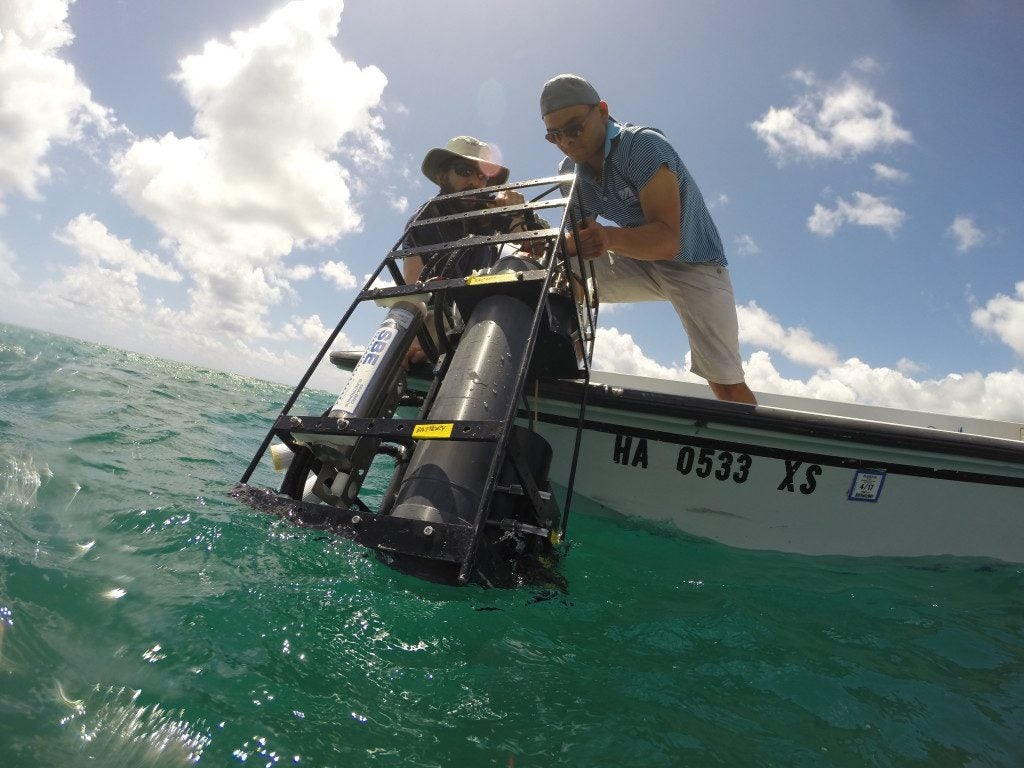
As boat operations begin on Tuesday, June 7, Brandon Russell (University of Connecticut) drops the inherent optical properties “cage” into the water. Instruments in the cage measure how light is absorbed and scattered in the water. The measurements will help scientists “see through” the water and isolate the light reflected from the bottom. Credit: HIMB/Daniel Schar
What makes the Coral Reef Airborne Laboratory (CORAL) a game-changer is its airborne instrument. NASA’s Portable Remote Imaging Spectrometer (PRISM) will fly at 28,000 feet, viewing entire coral reef ecosystems on a scale that no boat-based campaign can match. Yet CORAL is using three research boats and scuba divers in the same areas that PRISM will be flying above. With a state-of-the-art remote sensing instrument in action, what’s the point of getting wet?
“We have to go in the water to make sure the airborne data are accurate,” said CORAL principal investigator Eric Hochberg, of the Bermuda Institute of Ocean Sciences. The boat measurements are like independent witnesses in a trial. If they agree with the PRISM data, it confirms that the PRISM measurements are valid—which is why this step is called validation.
As CORAL’s operational readiness test—its final dress rehearsal—continues on Oahu, the first boat team has been testing optical instruments in the waters of Kaneohe Bay. Researchers Brandon Russell, from the University of Connecticut, and Rodrigo Garcia, from the University of Massachusetts, Boston, are measuring light at the ocean surface and optical properties of the water around the 17-square-mile bay. A second boat team arrived Thursday to start assembling and testing equipment to measure reef metabolism, specifically photosynthesis and calcification. A third boat team arriving Saturday will measure the composition (coral, algae, and sand) of the seafloor, scientifically known as benthic cover. The third team will also measure optical properties (reflectance) of the seafloor.
Hochberg noted that validation is especially important in CORAL because its science is ultimately based on the large-scale airborne measurements, and it will be collecting data in many locations where there are no supporting data available. “The airplane will be flying over remote regions where we can’t go diving and we don’t know what’s there,” he said. “Every pixel in the PRISM data will have to be identified. Some will have more coral or less coral, some will be deeper, some will be shallower. We need validation data to give us confidence in all these different conditions.”


